What is laser
The laser is considered one of the four great inventions of the 20th century. Unlike natural light, laser light is a human invention based on quantum theory.
What differentiates laser light from natural light are its unique characteristics and the process by which it is generated. The laser is often referred to as “the fastest knife, the brightest light, and the most accurate ruler.”
Compared to natural light, laser light is highly intense, highly monochromatic, highly coherent, and highly directional.
Laser light is the result of atomic stimulated radiation. When atoms are excited by energy from the pump source, they can transition to a high-energy state. If they encounter an external photon with a specific frequency, they will release an identical photon. This process causes more atoms to transition and produce the same photon, resulting in stimulated radiation and the production of laser light.
The frequency, phase, propagation direction and polarization state of photons produced by stimulated radiation and external photons are exactly the same, which is why laser light has unique characteristics of high intensity, high monochromaticity, high coherence and high directionality.
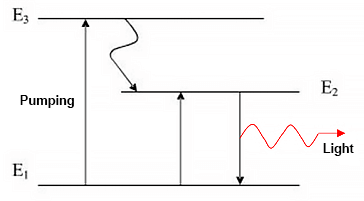
Schematic diagram of atomic energy level transition
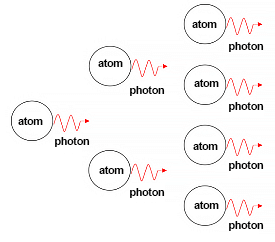
Schematic diagram of the stimulated radiation process
Laser characteristics
- Good directivity
- Good monochromaticity
- High strength
- High coherence
History of the laser
The commercial use of laser technology began in the 1970s and has since developed rapidly. In 1917, Einstein first proposed the concept of stimulated radiation. The world's first solid-state ruby laser was introduced in 1960.
During the 1970s, laser technology entered the commercial era and has continued to grow and expand ever since. After studying the interaction between laser beams and matter, the application of laser technology has expanded and expanded, especially in the industrial sector. In the 1990s, industrial applications of laser technology entered a high-speed stage of development.

Development history of laser technology
Two laser application
The high intensity, good monochromaticity, good coherence and good directivity of laser light determine its two main application scenarios: energy laser and information laser.
Laser power:
Laser technology is known for its high energy density, making it ideal for various applications, such as material processing, weapons, medical treatment, among others.
Laser information:
The laser's good monochromaticity and directivity make it suitable for information transmission (optical communication) and distance measurement (optical measurement). Optical communication has several advantages over traditional electrical communication, such as high capacity, long-distance transmission capability, higher confidentiality, and lightweight nature.
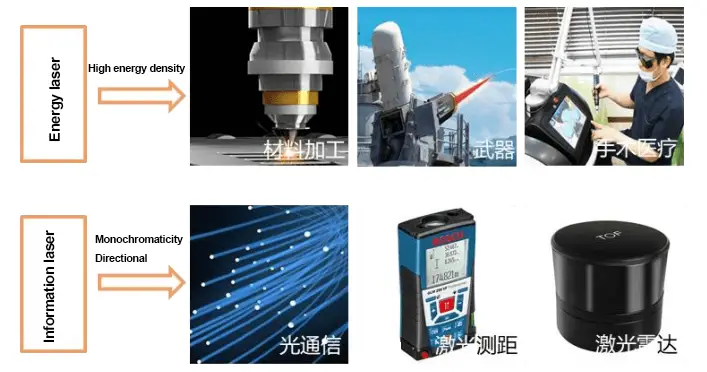
Laser Processing Equipment
Laser processing is an excellent example of precision processing technology, with its growth driven largely by the replacement of traditional processing methods.
Compared with other processing methods, laser processing offers several advantages, including high efficiency, high precision, low energy consumption, minimal material deformation and ease of control.
These advantages can be attributed to two main characteristics of laser processing: non-contact machining and high energy density.
Contactless machining:
In laser processing, the heat generated by the interaction between the laser and the material completes the processing, without physical contact between the processing tool and the material. This eliminates the effects of force on the processed material and results in relatively low residual stress. Furthermore, the small diameter of the laser beam allows for high precision.
High energy density:
The power density of laser processing can reach more than 107 W/cm^2, which is thousands or even tens of thousands of times higher than other processing methods such as flame and arc. This higher power density allows the laser to process a small area of material without affecting the surrounding area, leading to greater processing accuracy and efficiency.
Multipoint advantage
- High efficiency
- High precision
- Low energy consumption
- Small deformation
- Easy to control
Laser: the central unit of laser equipment
The laser is a crucial component in generating laser light and is the main component of laser equipment.
The laser value typically represents 20-40% of the total value of a complete set of laser processing equipment, and in some cases it can be even higher.
The laser is where the pumping and stimulated radiation processes occur. A typical laser consists of several parts, including the laser working material (which emits energy), the pump source (which supplies energy), and the optical resonator (which facilitates the propagation of energy).
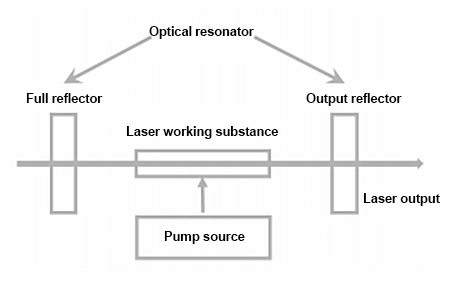
Laser basic structure diagram
Types of laser
There are several methods for classifying lasers, but four of them are the most used:
Working substance:
Lasers can be classified based on the type of working substance they utilize, including gas lasers, solid lasers, liquid (dye) lasers, semiconductor lasers, excimer lasers, and others.
Gas laser:
Gas lasers use gas as the working material. Examples of common gas lasers include CO lasers, He-Ne lasers, argon ion lasers, He-Cd lasers, copper vapor lasers, and various excimer lasers. CO 2 lasers are particularly widely used in industry.
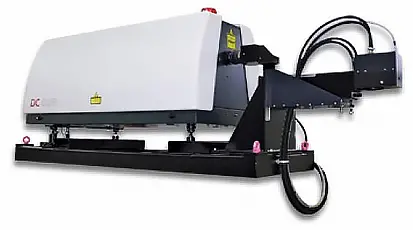
CO 2 laser
Solid State Lasers:
In solid-state lasers, metal ions capable of producing stimulated emission are doped into a crystal and used as the working material. Commonly used crystals include ruby, corundum, aluminum garnet (commonly known as YAG), calcium tungstate, calcium fluoride, yttrium aluminate, and lanthanum berylate. Currently, YAG is the most used crystal in solid-state lasers.
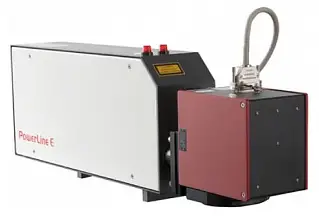
Solid State Laser
Liquid Laser:
In liquid lasers, the working substance is a solution formed by dissolving organic dyes in liquids such as ethanol, methanol or water.
Semiconductor lasers:
Semiconductor lasers, also known as laser diodes, use semiconductor materials as working materials, such as gallium arsenide (GaAs), cadmium sulfide (CDS), indium phosphide (INP), and zinc sulfide (ZnS).
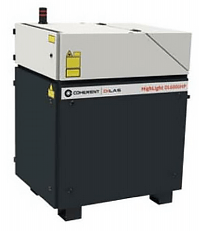
Semiconductor lasers
Fiber laser:
A fiber laser uses fiberglass doped with rare earth elements as its working material. Fiber lasers are lasers that use fiber as the medium for generating laser light.
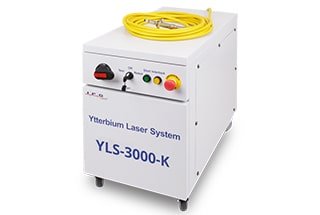
fiber laser
The fiber laser is known as the “3rd generation laser” due to its exceptional performance:
(1) The small volume, flexibility, low volume-to-area ratio, and high photoelectric conversion rate of the fiber result in a fiber laser that is miniaturized, intensified, and highly efficient in terms of heat dissipation and photoelectric conversion.
(2) The laser output of a fiber laser can be obtained directly from the fiber, making the fiber laser highly adaptable to processing applications in any space.
(3) The fiber laser structure, which does not have optical lenses in the resonant cavity, offers advantages such as ease of use, low maintenance and high stability.
(4) The beam quality of a fiber laser is also exceptional.
| Types of laser | Typical type | Laser wavelength | Maximum output power | Energy Conversion Efficiency | Characteristics |
| gas laser | CO 2 laser | About 10.6um infrared | 1-20kw | 8%~10% | Good monochromaticity and high energy conversion efficiency |
| Liquid laser | 6G dye laser | UV to IR | – | 5%~20% | The output wavelength is continuously adjustable, the power conversion power is high, easy to prepare and cheap |
| Solid State Lasers | YAG/ruby laser | Visible to near infrared | 0.5-5 kW | 0.5%~1% | Low output power, low energy conversion rate and good monochromaticity. |
| Semiconductor lasers | GaAs diode laser | 100nm-1.65um | 0.5-20 kW, two-dimensional array can reach 350 kW | 20% – 40%, laboratory 70% | High energy conversion power, small volume, light weight, simple structure, long service life and low monochromaticity. |
| fiber laser | Pulsed/CW Fiber Laser | 1.46um-1.65um | 0.5-20 kW | 30%-40% | Miniaturization, intensification, high conversion efficiency, high power output, high beam quality, no optical collimation and less maintenance. |
Power output waveform (working mode):
Lasers can be categorized into three types: continuous laser, pulsed laser, and quasi-continuous laser.
Pulsed lasers can be classified based on pulse width: millisecond laser, microsecond laser, nanosecond laser, picosecond laser, femtosecond laser, and attosecond laser.
Continuous laser:
This type of laser emits a stable energy waveform continuously during use, with high power. It is suitable for processing materials with large volume and high melting points such as metal plates.
Pulsed laser:
Pulsed lasers can be divided into millisecond lasers, microsecond lasers, nanosecond lasers, picosecond lasers, femtosecond lasers and attosecond lasers depending on the pulse width. Femtosecond and attosecond lasers are commonly called ultrafast lasers.
Although the power of pulsed lasers is lower compared to continuous lasers, the machining precision is higher. As a general rule, the narrower the pulse width, the greater the machining accuracy.
Near continuous laser:
This type of laser is between a continuous laser and a pulsed laser, where the high-energy laser can be emitted repeatedly within a certain period.
| Classification method | Laser Category | Characteristics |
|---|---|---|
| Classification by work mode | CW laser | The excitation of the work material and the corresponding laser output can be carried out continuously over a long time interval |
| pulsed laser | Refers to a laser with a single laser pulse width of less than 0.25 seconds and working only once in a given interval. It has a large output peak power and is suitable for laser marking, cutting and ranging. | |
| Classification by pulse width | Millisecond laser (MS) | 10 -3 S |
| Microsecond laser (USA) | 10 -6 S | |
| Nanosecond laser (NS) | 10 -9 S | |
| Picosecond (PS) laser | 10 -12 S | |
| Femtosecond laser (FS) | 10 -15 S |
Output wavelength (color):
Lasers can be categorized into several types based on their wavelength: X-ray lasers, ultraviolet lasers, infrared lasers, visible lasers, etc.
Power:
Lasers can be divided into three categories based on their power: low-power lasers (<100W), medium-power lasers (100W to 1500W), and high-power lasers (>1500W).
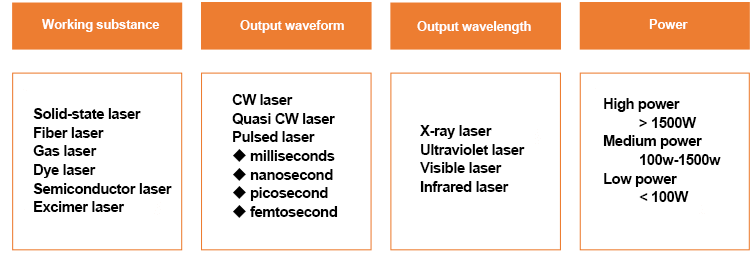
Classification of lasers
laser supplier
Some of the top laser suppliers in the market include Coherent, IPG Photonics, n-Light, Newport Corporation, TRUMPF, Rofin (now a subsidiary of Coherent), DILAS, SPI Lasers (now owned by TRUMPF), Mitsubishi Electric, Kawasaki Heavy Industries, MAX Photonics, JPT Optoelectronics, Raycus Fiber Lasers, Fei Bo Laser, Guoke Laser, Anpin Laser and HFB Laser.
You can also consult the top laser cutting machine manufacturers for reference.

























































